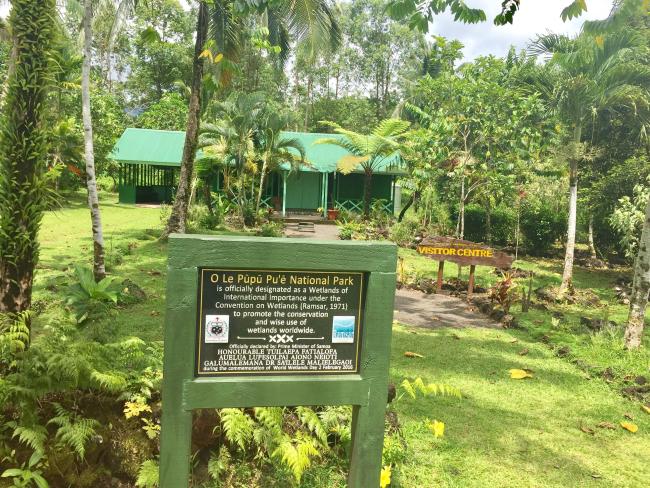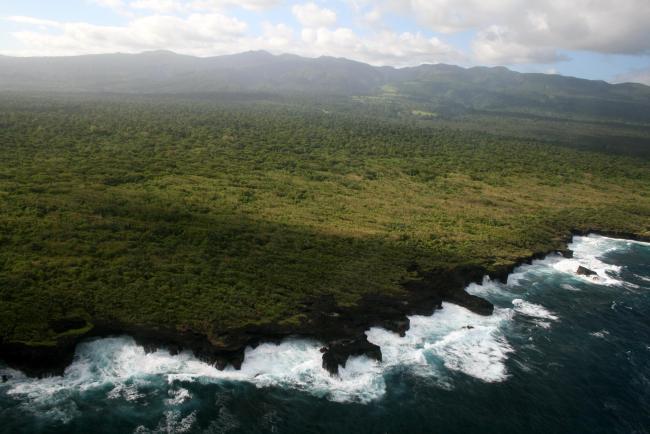O Le Pupū Puē National Park
O Le Pupū Puē National Park
- Country:
- Samoa
- Site number:
- 2313
- Area:
- 5,019.0 ha
- Designation date:
- 02-02-2016
- Coordinates:
- 13°59'S 171°43'53"W
Carousel
CarouselMaterials presented on this website, particularly maps and territorial information, are as-is and as-available based on available data and do not imply the expression of any opinion whatsoever on the part of the Secretariat of the Ramsar Convention concerning the legal status of any country, territory, city or area, or of its authorities, or concerning the delimitation of its frontiers or boundaries.
O Le Pupū Puē National Park was established in 1978 as the first National Park in the South Pacific region. It extends from the highest points of Upolu Island down to the rugged Le Pupū lava cliffs on the island’s south coast. The Site is home to two montane herbaceous marshes as well as parts of Mataloa River and Vaalega River, all good representatives of such ecosystems in Samoa. The Park includes large tracts of forest dominated by native plants, and is considered as the island’s best-preserved remaining tropical forest. It includes parts of the Togitogiga water catchment, the main water source for four villages, and also boasts waterfalls that are a prime tourist attraction. The Site is an Important Bird and Biodiversity Area as well as one of the eight terrestrial Key Biodiversity Areas of Samoa. Its diverse habitats support four of the eight globally threatened bird species of Samoa including the critically endangered tooth-billed pigeon (Didunculus strigirostris) and the endangered mao (Gymnomyza samoensis), whose populations have severely declined in recent years. Very little is known about the freshwater biodiversity of Samoa; it is likely that the freshwater ecosystems in the Park support significant biodiversity. Several management actions are being undertaken to address the vigorous spread of invasive plants after the cyclones of 1990 and 1991 caused extensive damage to the lowland forests.
- National Park - O Le Pupū Puē National Park
- WS2313RIS_1710_en.pdf
- WS2313_map170704.jpg
- WS2313_mgt170912.pdf






